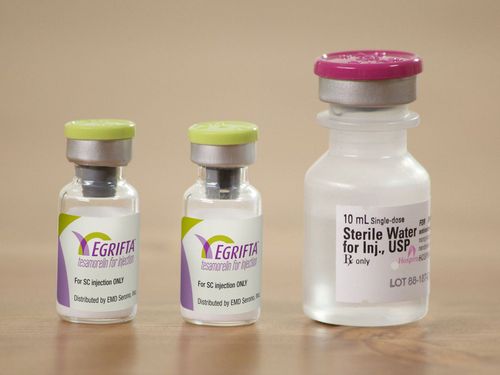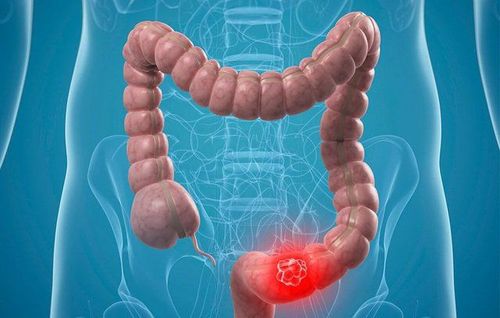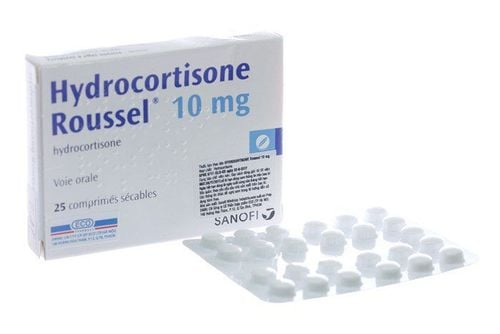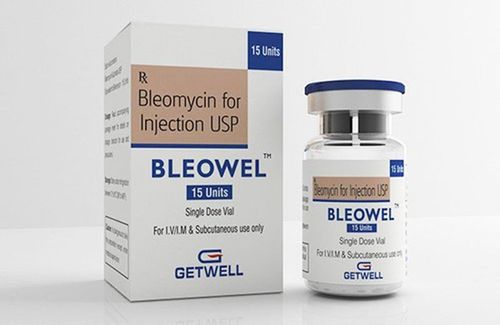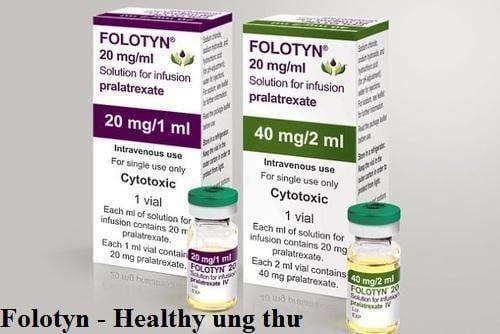This is an automatically translated article.
For years, researchers have known that suppressing the immune system is linked to cancer. It is therefore not surprising that human immunodeficiency virus (HIV) or acquired immunodeficiency syndrome (AIDS) can also cause major impairment of the immune system and is associated with increased risk of cancer. In addition to some cancers with "solid tumors," HIV is considered a risk factor for blood cancers.1. Why does HIV cause cancer?
HIV infects and kills T lymphocytes. T lymphocytes are part of the body's immune system that normally helps clear infections, including cancer-causing viruses. In people who don't have HIV, their immune response can help clear the virus before cancer can develop.But, people with HIV have fewer T-lymphocytes, so they can't fight the infection as easily. Oncogenic viruses such as Kaposi's sarcoma herpes virus (KSHV), Human herpesvirus-8 (HHV-8), Epstein-Barr virus (EBV) and Human papilloma virus (HPV) can then persist for a while. and cause cells to grow for a long time and divide out of control. This can lead to cancer.
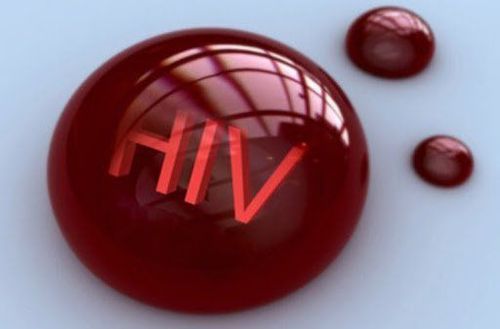
Những người nhiễm HIV có ít tế bào Lympho T hơn, vì vậy họ không thể chống lại bệnh nhiễm trùng một cách dễ dàng
2. Cancer risk for HIV patients
Since the development of highly active antiretroviral therapies (HAART), the survival time of HIV patients has been greatly extended. However, with the prolongation of life, patients still face increased cancer risks. It was previously estimated that up to 40% of HIV/AIDS patients may develop AIDS-related cancers.In the early days of the AIDS epidemic, certain types of lymphoma were occurring thousands of times more frequently and at a rate that was thousands of times higher in HIV patients than in the rest of the population. Since HAART was introduced in 1996, these rates have decreased significantly, but HIV infection continues to be a risk factor for Non-Hodgkin lymphoma. However, the study results were not clear about the effect of HAART on the incidence of Hodgkin lymphoma.
Non-Hodgkin Lymphoma (NHL) is the second most common cancer in HIV patients, after Kaposi sarcoma. Some less common blood cancers, such as Hodgkin's lymphoma, leukemia, and myeloma, have also been linked to HIV. The risk of NHL is the same across all HIV populations, regardless of how the patient was infected.
3. Lymphomas associated with HIV
Non-Hodgkin lymphoma (NHL) is a type of cancer that originates in the lymph tissue and can spread to other organs. The incidence is higher in patients with HIV or AIDS than in uninfected individuals. However, the majority of people with NHL do not have HIV.There are different types of NHL, some of which are frequent in people with AIDS. Most AIDS-associated lymphomas are B-cell Non-Hodgkin lymphomas. HIV normally stimulates B lymphocytes, causing them to increase their reproduction and activation rates. So these are fast-growing lymphomas, including diffuse large B-cell lymphoma and Burkitt lymphoma.
Another type is primary central nervous system (CNS) lymphoma, which originates in the brain or spinal cord. Symptoms of CNS lymphoma can include seizures, facial paralysis, confusion, memory loss, and feeling tired. Primary CNS lymphoma accounts for nearly half of all AIDS-associated lymphomas.
Most AIDS-related NHL are special cases because most histopathology is found in sites outside the lymphatic system. The most common places NHL affects are the digestive system, liver, heart, lungs, skin, and bone marrow.
Outcomes of patients with AIDS-related NHL depend on the type of lymphoma and the patient's immune function, as well as other factors. People with advanced NHL, low CD4 (T-helper) cell counts, and/or people who are not taking anti-HIV drugs often get worse than those without these risk factors
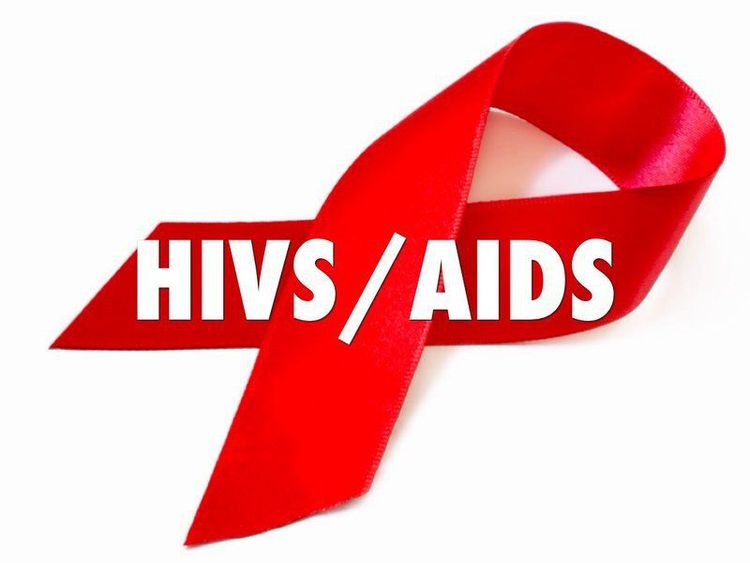
Hầu hết NHL liên quan đến AIDS là những trường hợp đặc biệt
4. Can blood cancer in HIV patients be prevented?
Not quite, but patients on HAART have a reduced risk of developing HIV-related blood cancers. However, the knowledge and awareness that helps to recognize early signs and symptoms and common locations of lymphoma is very important if you have HIV or AIDS.Patients with HIV should be consulted as well as seek medical attention as soon as possible when suspicious symptoms are detected. Diagnosing cancer and starting treatment early can offer the best chance for successful treatment.
Most people with AIDS-related lymphoma will experience the same general symptoms as any other lymphoma patient.
5. Symptoms of blood cancer related to HIV infection
Most people with AIDS-related lymphoma will experience the same general symptoms as any other lymphoma patient. Most have symptoms that suggest cancer such as:Inexplicable weight loss Fever with no other signs of infection Lymph nodes get enlarged rapidly Sweating profusely at night Because AIDS-related Lymphomas are common found outside the lymphatic system, symptoms may also manifest depending on where the cancer is growing. For example, signs of lymphoma in the brain may include seizures, weakness or decreased sensation, confusion, or headache. Lymphomas in the digestive system can lead to vague abdominal pain or blood in the vomit or bloody stools.

Hầu hết những người mắc bệnh u Lympho liên quan đến AIDS sẽ gặp các triệu chứng chung giống như bất kỳ bệnh nhân u Lympho khác
6. Treatment of HIV-associated blood cancer
Like other lymphomas, lymphomas in AIDS patients are often treated with radiation therapy, chemotherapy, or both. The challenge, however, is that most of these patients have bone marrow suppression and low immunity prior to initiation of treatment. As a result, patients are at increased risk of severe and life-threatening infections during treatment. In addition, it is believed that immunosuppression induced by chemotherapy may also accelerate HIV progression.There are various combination treatments such as low-dose chemotherapy regimens, targeted therapies, stem cell transplantation, as well as adding chemotherapy to HAART that are being studied to increase survival chances. for patients.
Treatmentability and success depend on how advanced the cancer is (stage), CD4 count, and other AIDS-related conditions.
NHL does not always need immediate treatment. If the lymphoma is slow growing or the immune system is still functioning properly, the doctor can expect treatment, checking the condition every few months to reassess the disease. Intervention is performed when symptoms progress or worsen.
6.1. Radiation therapy Radiation can kill cancer cells or stop them from growing. The doctor will use an extracorporeal radiation system and direct high-energy waves or particles to the cancer site, or the doctor can bring radioactive material closer to the cancer site.
6.2. Chemotherapy Chemotherapy also helps stop the growth of cancer cells by killing malignant cells or stopping them from dividing. Some medications can be taken orally, intravenously, or intramuscularly. Or your doctor can place chemicals directly into a continuous injector in the patient's body.
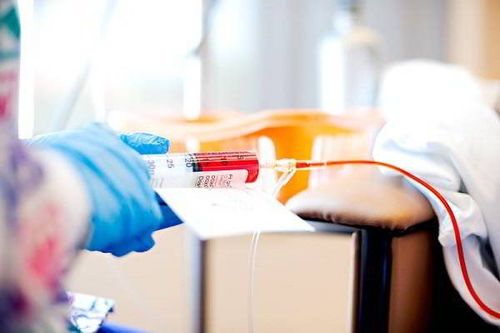
Hóa trị giúp ngăn chặn sự phát triển của các tế bào ung thư bằng cách tiêu diệt tế bào ác tính hoặc ngăn cản sự phân chia
Cyclophosphamide (Cytoxan) Doxorubicin (Adriamycin) Vincristine (Oncovin) Prednisolone The chemical can have side effects, including hair loss, mouth sores, vomiting and fatigue. You may bruise or bleed easily. And if you have HIV, you'll have a higher risk of infection because your white blood cell count will be lower.
6.3. Targeted Biological Therapy Targeted or biologic therapy uses drugs based on substances your body makes to boost your immune system to help fight cancer. Different drugs work in very specific ways to stop cancer growth. They often have less serious side effects than chemotherapy.
6.4. Stem cell transplant therapy Stem cell transplantation begins with higher doses of chemotherapy and sometimes radiation to kill cancer cells. But that also kills the bone marrow leaving the bone marrow unable to make new blood cells. So doctors replace it with stem cells taken from the patient before treatment or from a donor.
If the patient is diagnosed with non-Hodgkin lymphoma, the patient is at increased risk for an "opportunistic infection" such as Pneumocystis pneumonia or PCP. Your doctor may prescribe antibiotics to prevent these conditions.
In summary, people with HIV have an increased risk of developing cancers, including Hodgkin lymphoma, myeloma, and more commonly Non-Hodgkin Lymphoma. It is important for HIV/AIDS patients to be aware of the signs and symptoms of lymphoma so that treatment can be started early. Ongoing research continues to help people with AIDS-related lymphoma get the best and most effective treatment options. Lymphoma survival rates are lower in people with AIDS, so the odds of being able to receive chemotherapy are also lower. Trials looking at ways to reduce chemotherapy side effects in people with AIDS are important.
Early cancer screening is considered a perfect measure in the timely detection and treatment of all types of cancer. Reduce the cost of treatment and especially reduce the mortality rate in patients. Vinmec International General Hospital always deploys and introduces to customers a HIGH-TECH CANCER CHECKLIST PACKAGE to help with gene testing, imaging, and biomarkers for early tumor detection. Vinmec International General Hospital has many early cancer screening packages. Only one gene test can assess the risk of 16 common cancers in both men and women (lung cancer, colon cancer). rectal cancer , breast cancer , pancreatic cancer , cervical cancer , stomach cancer , prostate cancer ,....)
Early detection of early signs of cancer through diagnosis imaging, endoscopy and ultrasound. The operation is simple, careful and accurate. A team of well-trained specialists, especially in oncology, are capable of handling cancer cases. With facilities, advanced and modern medical equipment and a team of doctors with deep expertise and experience. At Vinmec, the examination process becomes fast with accurate results, saving costs and time for patients.
To register for examination and treatment at Vinmec International General Hospital, you can contact Vinmec Health System nationwide, or register online HERE.
Reference source: webmd.com, verywellhealth.com




